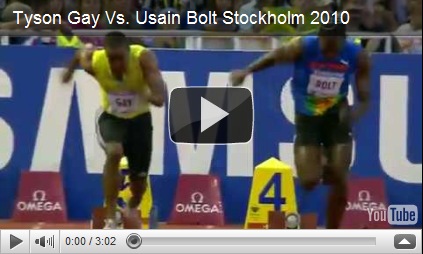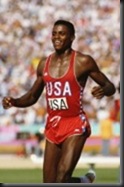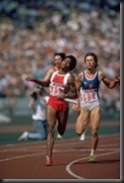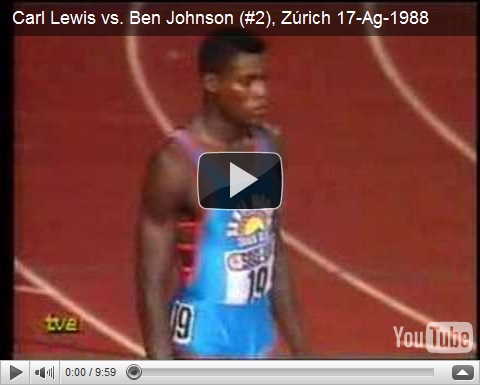There are some crucial areas of this sport that are in need of repair if we are to move forward and become all that we can be. One of the most critical being the perception of this sport when it comes to doping.
Just this past week came news that Laverne Jones Ferrette – World Indoor 60 silver medalist and the first woman to run under 7.00 in over a decade – didn’t compete outdoors this year because she was suspended for a failed drug test! And I have to scratch my head and ask: why weren’t we told back in February when it all occurred? It adds to, and exacerbates the perception that the drug situation in this sport seems to be a constant cover up to allow the sport to simply do what it feels like instead of seriously trying to “win the war” against doping!
The answer, of course is simple though disturbing – we treat doping in this sport like the old “batty” relative kept in the attic. We know it’s there. But any “noises” that are heard are explained away as “squirrels in the roof” – extraordinary human beings. We just don’t want to admit that there may be a problem. So the sport keeps all information on doping locked away from sight and inaccessible – and we just don’t talk about it and discourage others from doing the same.
That’s why so many people got mad at former hurdler James Carter earlier this year when he expressed his feelings about being “cheated out of placings and medals” by athletes he felt or says he knew were using drugs. Why Victor Conte is called bitter, a liar, and a man with an agenda whenever he brazenly states that he knows who, what, when, where and how to stop the drug flow in the sport. And why people have gotten mad at me in the past for bringing up anything that has to do with the drug issue.
No one wants to talk about why when Americans get busted for inadvertent drug use for substances that they clearly weren’t taking to enhance performance the penalty is two years, but when Jamaicans get busted for inadvertent drug use the penalty is three months. Or that WADA says that Russia must step up it's anti doping efforts, while defending Jamaica’s lack of a testing facility, conflict of interest within the program, lack of an anti doping agency through the Olympics and Worlds and failure to participate in the regional Anti Doping Agency until JADCO becomes adequately functional.
Then again, before there was a James Carter, a WADA or anti doping agencies there was Gwen Torrence proclaiming that she was competing against, and losing to, athletes that were not as clean as the driven snow – and she too was vilified for entertaining such thoughts. The small country of East Germany did nothing but turn out women running sprint and hurdle records as if they owned the clock – most with voices deeper than my own. Of course later on we found out why. And the Chinese went from having almost no world class athletes to destroying the record books in everything 1500 meters and up. But you couldn’t discuss the verboten topic of <drugs> because it’s not allowed in track and field – even though everyone knew what they were looking at.
You see the sport of track and field has a storied history of simply wanting to tout the “Hero” or country of the moment and looking the other way – while everyone whispers in the background about what they think is in the attic. One minute it’s East Germany, the next the United States. The Greeks and Canadians have had their turn, and the Jamaican’s are experiencing theirs as we speak. Unfortunately in the process the baby gets tossed out with the bath water – the innocent get branded with the guilty – because we have no forum for exploring and coming up with the truth. Discussion is not allowed and there is no transparency within our testing systems. Instead we have a sport where innuendo runs rampant as everyone wonders what is causing the noise in the attic! – it’s not like anyone thought Laverne not competing this year was actually normal. Leaving suspicion, barbershop discussions, and message board chatter as the substitute for what should be IAAF press releases and a web site dedicated to the transparent dispersal of information on doping within the sport.
Because the reality is that these things must be talked about if we have any hope of cleaning up this sport. Though at times I wonder if that’s truly the goal of the IAAF. After all, the overall marketing plan of track and field seems to be predicated not on the competition itself, but the pursuit of the ultimate in performance – the setting of world records. A dichotomy that seems to support the very behavior that the sport says it abhors. Which causes some very erratic behavior from track and field. That’s why it’s ok to trash anyone that’s been convicted and banned for two years or more, but not ok to trash those convicted but only banned for a few months. It’s why we can say that those that were out for two years or more were only good because they used drugs, but we create silly excuses for the miraculous performances of those not banned – even though their performances far outpace those of banned athletes. Dietary excuses (special tubers grown on mountain sides), alien life forms in spikes that have exponentially bypassed human evolution, and small populations that are just better than anyone else on the planet because they are, well “special”. Schizophrenic behavior that causes the sport to decry drug use out of one side of it’s mouth while embracing otherworldly performance out of the other side – because, as with the relative, they may be crazy/outlandish but we get paid for taking care of them – it’s money in the pocket!
You see, this sport lives on the back of the hero of the moment no matter how much suspicion swirls. Just as Marion Jones was touted as the next FloJo until the noises in the attic became almost unbearable – and then finally the truth came out. FloJo herself was wrapped in questions that the sport never ever wanted to discuss. Because there is nothing questionable about coming from average to otherworldly unless you get caught. If you don’t believe me ask Kostas Kenteris, who was Borzov come anew until missing a couple of drug tests, hopping a motorcycle and landing in the hospital prior to the 2004 Athens Games. Then of course there had to be something behind those titles he had been winning recently! And there was absolutely nothing wrong with Justin Gatlin’s performances until a single test in Kansas in 2006 saw him taking a 4 year vacation from the sport.
It’s like the uncle in the attic – we love the extra money, if only he would be quiet when there’s company! But like that relative in the attic, help is needed. We need to get him out of the attic and get him some real help. Just like we need to stop pretending this sport doesn’t have a problem and get about the process of eradicating drugs in this sport – wherever they exist, regardless who is using them.
Of course the first step to recovery is to admit you have a problem. For track and field that means getting drugs out of the attic and into the conversation. Identifying where the problem exists and going about the business of getting it eliminated. It means to stop vilifying those that would talk about it and join in the conversation. It means using the best methods at your disposal. Which means getting rid of urinalysis and going to a “real” blood testing program replete with properly conducted blood passports. It means treating all nations, federations and athletes equally under the law and a stop to holding grudges against those with previous transgressions, and no more turned heads to those felt in need of help in leveling the playing field. It means an end to performance based marketing and to the cash cow as king. It means this sport has to make a decision about its integrity! Just as families have to make decisions about how it deals with those members that truly need help. These are the hard decisions. The ones that no one wants to make, but have to make in order to move forward SUCESSFULLY.
We can start by making doping more transparent. It would be quite simple to create a site that hosts a database providing information on drug tests administered by the sport – by athlete, number of tests, type of tests conducted, and results of said tests. The site could also have a ”suspension calculator” that would objectively determine the suggested suspension period for an athlete convicted of doping based on hard data – substance, quantities found, etc. – eliminating subjective suspensions handed out by individual federations.
No more being told only of those athletes that receive suspensions. No more “bargains” being struck behind closed doors. No more preferential treatment. But rather the message that if you dope and are caught EVERYONE will know and you will be punished accordingly. That’s the message that MUST be sent if we have any hope of cleaning up this sport.
If Track Santa will bring me that, I think it would be a very good start.



















